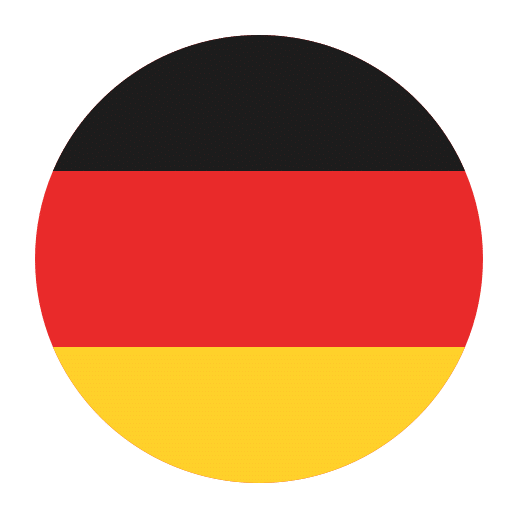Fashion is a universal language, but how we describe it can vary greatly from one culture to another. If you’re learning German and are interested in fashion, knowing how to describe clothes and fashion in German can be both fun and incredibly useful. This comprehensive guide will help you understand the vocabulary, phrases, and cultural nuances associated with describing fashion in German.
Basic Vocabulary: Clothing Items
Let’s start with the basics: the names of various clothing items in German. Here are some common articles of clothing and their German translations:
– **Shirt**: das Hemd
– **Blouse**: die Bluse
– **T-shirt**: das T-Shirt
– **Pants**: die Hose
– **Jeans**: die Jeans
– **Skirt**: der Rock
– **Dress**: das Kleid
– **Jacket**: die Jacke
– **Coat**: der Mantel
– **Sweater**: der Pullover
– **Shoes**: die Schuhe
– **Sneakers**: die Turnschuhe
– **Boots**: die Stiefel
– **Scarf**: der Schal
– **Hat**: der Hut
– **Cap**: die Mütze
Describing Clothes: Adjectives and Phrases
Once you’re familiar with the basic vocabulary, the next step is to describe these items. Adjectives are essential for this, and in German, they must agree with the gender and case of the nouns they describe. Here are some common adjectives and phrases you can use:
– **Comfortable**: bequem
– **Casual**: lässig
– **Elegant**: elegant
– **Chic**: schick
– **Trendy**: modisch
– **Classic**: klassisch
– **Sporty**: sportlich
– **Formal**: formell
– **Colorful**: bunt
– **Plain**: schlicht
For example:
– “Das Hemd ist bequem.” (The shirt is comfortable.)
– “Die Bluse ist elegant.” (The blouse is elegant.)
– “Der Rock ist schick.” (The skirt is chic.)
Describing Colors
Colors play a crucial role in fashion. Here are some basic colors in German:
– **Red**: rot
– **Blue**: blau
– **Green**: grün
– **Yellow**: gelb
– **Black**: schwarz
– **White**: weiß
– **Gray**: grau
– **Brown**: braun
– **Pink**: rosa
– **Purple**: lila
You can describe the color of clothes by combining the article of clothing with its color:
– “Die Hose ist blau.” (The pants are blue.)
– “Das Kleid ist rot.” (The dress is red.)
Patterns and Fabrics
Apart from colors, patterns and fabrics are essential in describing fashion. Here are some useful terms:
Patterns:
– **Striped**: gestreift
– **Checked**: kariert
– **Polka-dotted**: gepunktet
– **Floral**: geblümt
– **Paisley**: mit Paisleymuster
Fabrics:
– **Cotton**: Baumwolle
– **Wool**: Wolle
– **Silk**: Seide
– **Linen**: Leinen
– **Leather**: Leder
– **Denim**: Denim/Jeansstoff
For example:
– “Die Bluse ist gestreift.” (The blouse is striped.)
– “Der Mantel ist aus Wolle.” (The coat is made of wool.)
Talking About Fashion Trends
Understanding and discussing fashion trends can make conversations more engaging. Here are some phrases to help you talk about fashion trends:
– **Fashion trend**: der Modetrend
– **In style**: im Trend
– **Out of style**: aus der Mode
– **Fashionable**: modisch
– **Timeless**: zeitlos
– **Retro**: retro
For example:
– “Der Modetrend in diesem Jahr ist retro.” (The fashion trend this year is retro.)
– “Dieses Kleid ist zeitlos.” (This dress is timeless.)
– “Diese Jacke ist aus der Mode.” (This jacket is out of style.)
Shopping for Clothes
Shopping for clothes in a German-speaking country can be a great way to practice your language skills. Here are some useful phrases and questions:
– **I am looking for…**: Ich suche…
– **Do you have this in another size/color?**: Haben Sie das in einer anderen Größe/Farbe?
– **Can I try this on?**: Kann ich das anprobieren?
– **Where are the fitting rooms?**: Wo sind die Umkleidekabinen?
– **How much does this cost?**: Wie viel kostet das?
– **I like this.**: Das gefällt mir.
– **I don’t like this.**: Das gefällt mir nicht.
For example:
– “Ich suche ein schickes Kleid.” (I am looking for a chic dress.)
– “Haben Sie das in einer anderen Größe?” (Do you have this in another size?)
Expressing Opinions About Fashion
When discussing fashion, you often need to express your opinions. Here are some useful phrases:
– **I like it.**: Das gefällt mir.
– **I don’t like it.**: Das gefällt mir nicht.
– **It looks good on you.**: Das steht dir gut.
– **It doesn’t suit you.**: Das steht dir nicht.
– **It’s too tight.**: Es ist zu eng.
– **It’s too loose.**: Es ist zu weit.
For example:
– “Das steht dir gut.” (That looks good on you.)
– “Das gefällt mir nicht.” (I don’t like it.)
Discussing Fashion Preferences
Talking about your personal fashion preferences can also be an interesting topic. Here are some phrases to help you:
– **My favorite color is…**: Meine Lieblingsfarbe ist…
– **I prefer casual clothes.**: Ich bevorzuge lässige Kleidung.
– **I like elegant outfits.**: Ich mag elegante Outfits.
– **I often wear…**: Ich trage oft…
– **I never wear…**: Ich trage nie…
For example:
– “Meine Lieblingsfarbe ist blau.” (My favorite color is blue.)
– “Ich trage oft Jeans.” (I often wear jeans.)
Cultural Nuances in German Fashion
Understanding cultural nuances can enhance your ability to describe and discuss fashion in German:
– **Minimalism**: German fashion often emphasizes minimalism, with simple, clean lines and neutral colors.
– **Quality over Quantity**: Germans tend to value high-quality, durable clothing over fast fashion.
– **Seasonal Changes**: German fashion changes significantly with the seasons, so you’ll often hear terms like “Sommermode” (summer fashion) and “Wintermode” (winter fashion).
For example:
– “Deutsche Sommermode ist oft bunt und leicht.” (German summer fashion is often colorful and light.)
– “Im Winter bevorzugen viele wärmende Kleidung.” (In winter, many prefer warm clothing.)
Fashion-Related Idioms and Expressions
Idiomatic expressions can add a touch of authenticity to your language skills. Here are some fashion-related idioms and expressions:
– **To be dressed to the nines**: wie aus dem Ei gepellt sein
– **To dress up to the nines**: sich in Schale werfen
– **To be in someone else’s shoes**: in jemandes Haut stecken
– **To have an eye for fashion**: ein Auge für Mode haben
For example:
– “Sie hat immer ein Auge für Mode.” (She always has an eye for fashion.)
– “Er war wie aus dem Ei gepellt.” (He was dressed to the nines.)
Conclusion
Describing clothes and fashion in German is not just about learning vocabulary; it’s about understanding the cultural context and nuances. With this guide, you should feel more confident in discussing fashion in German, whether you’re shopping for clothes, expressing your fashion preferences, or simply appreciating the latest trends. Happy learning and happy shopping!

